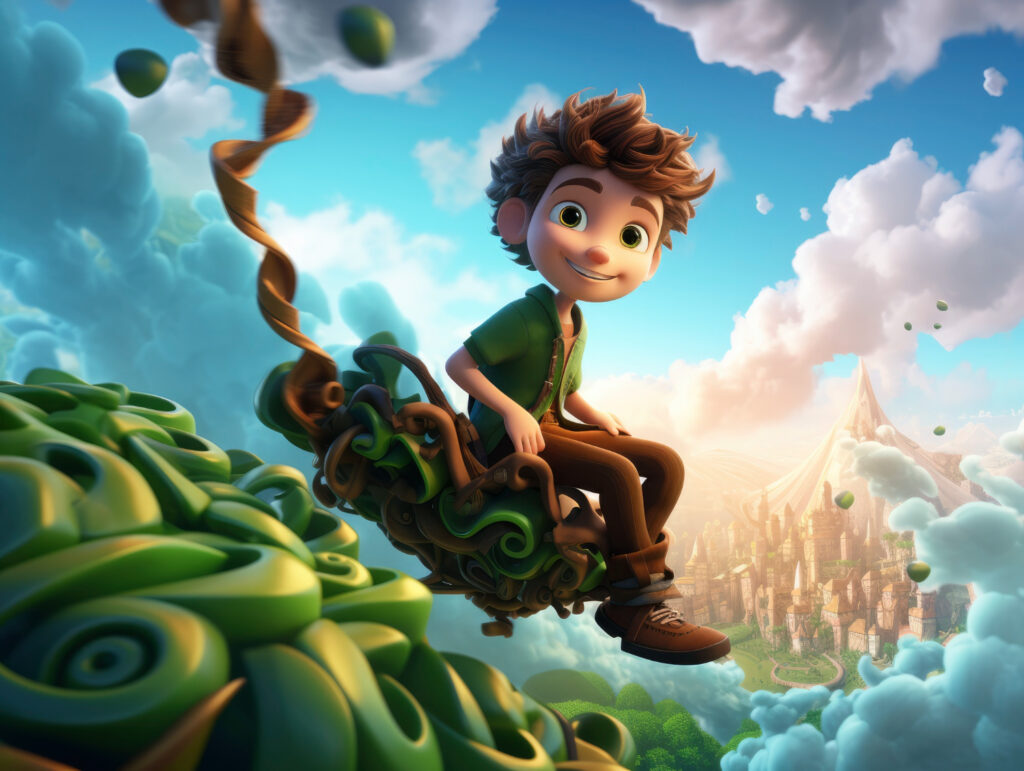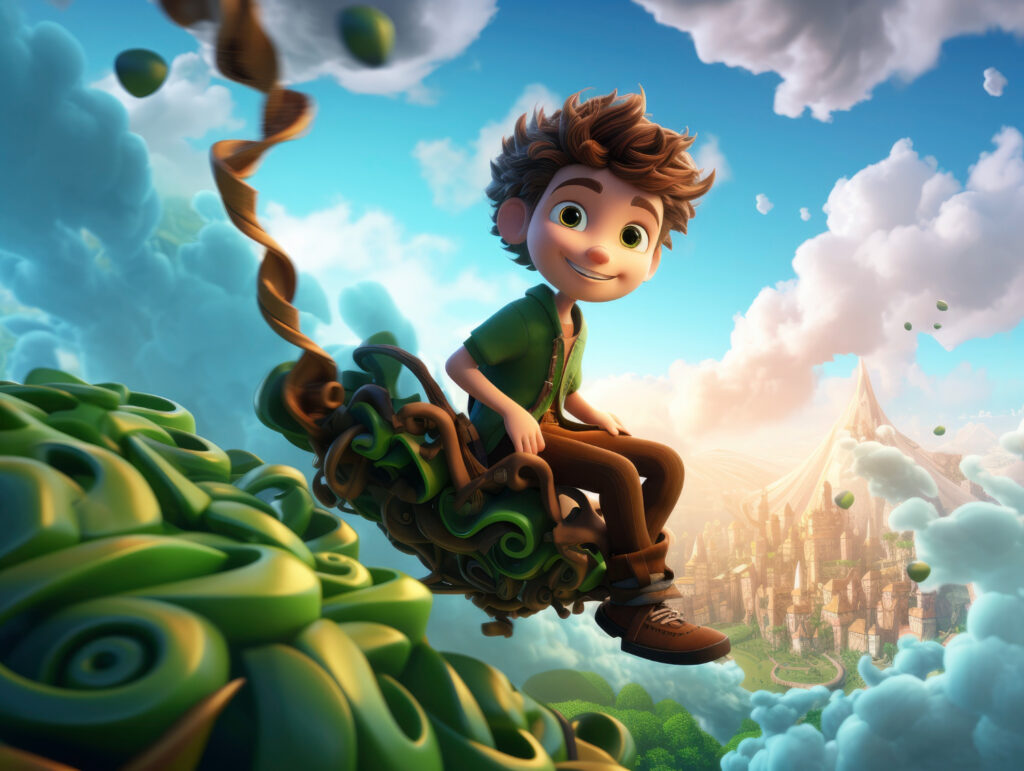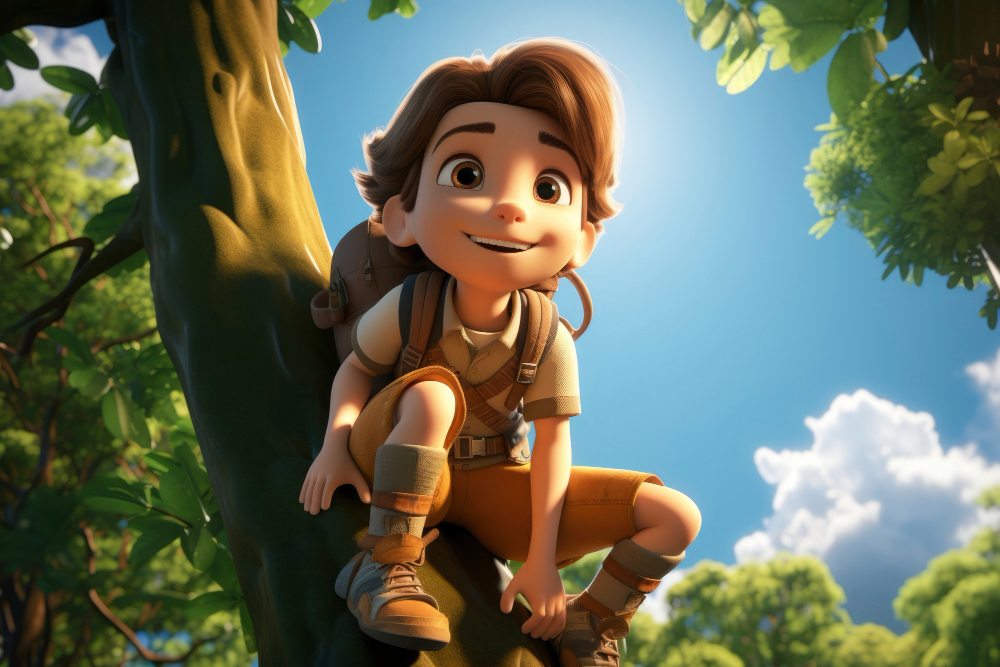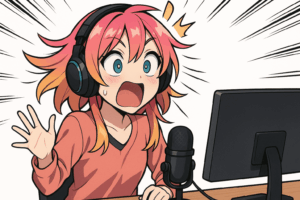3D character modeling breathes life into virtual worlds, captivating players with immersive experiences. Through meticulously crafted characters, game developers evoke emotions, drive narratives, and create memorable gameplay moments, making 3D character modeling indispensable in game development. In this comprehensive guide, we explore the significance of 3D character modeling in game development and unravel the intricacies of the character design process.
Behind every captivating game character lies an intricate creation process that blends artistry with technical expertise. Character creation involves a series of steps, from conceptualization to final rendering, each demanding creativity, precision, and attention to detail. Artists embark on a journey of exploration, sculpting raw ideas into fully-realized personas that inhabit the game world. Through meticulous planning game development, sculpting, texturing, and animation, characters are brought to life, enriching the gaming experience and leaving a lasting impression on players.
Understanding 3D Characters
Definition and Significance of 3D Characters
In the realm of digital art and game development, 3D characters are the virtual embodiments of creative imagination. These characters transcend the constraints of traditional mediums, existing within the three-dimensional space of computer-generated worlds. Unlike their 2D counterparts, 3D characters possess depth, volume, and the ability to move dynamically, thanks to advancements in technology. Their significance lies in their ability to breathe life into narratives, evoke emotions, and immerse players in captivating gaming experiences. Whether they’re heroic protagonists, menacing villains, or quirky sidekicks, 3D characters play a pivotal role in shaping the interactive landscapes of video games, animation, and virtual reality.
Evolution of 3D Character Modeling:
The evolution of 3D character modeling traces back to the early days of computer graphics when primitive forms and basic shapes laid the foundation for more complex creations. With the advent of polygonal modeling techniques, artists gained the ability to sculpt intricate details and refine surface textures with unprecedented precision. Over time, advancements in rendering technologies and the introduction of sophisticated software tools revolutionized the way characters were conceptualized and brought to life. From the rigid, angular models of yesteryears to the fluid, lifelike animations of today, the journey of 3D character modeling is a testament to human ingenuity and technological progress.
Different Types of 3D Characters
Realistic Humanoids:
These characters strive for lifelike accuracy, mimicking the proportions and features of real humans. Often used in narrative-driven games and simulations to evoke empathy and immersion.
Fantastical Creatures:
From fire-breathing dragons to mythical beasts, these characters defy reality and ignite the imagination. Commonly found in fantasy and adventure games, they add an element of wonder and awe to the gaming experience.
Anthropomorphic Beings:
Combining human traits with animal characteristics, these characters blur the lines between species. Popular in children’s games and animated films, they appeal to audiences of all ages with their whimsical charm.
Protagonists with Superhuman Abilities:
These characters possess extraordinary powers or skills, setting them apart from ordinary mortals. Often seen in superhero-themed games and action-adventure titles, they empower players to unleash their inner hero.
Secondary Character:
Supporting roles that enrich the game world and enhance character creator and the game dev narrative depth. From loyal sidekicks to cunning adversaries, these characters play vital roles in shaping the player’s journey.
Cartoon Characters:
Embracing exaggerated features and vibrant colors, these cartoon character exude charm and personality. Commonly featured in platformers and family-friendly games, the abstract model evoke nostalgia and joy with their timeless appeal.
Stylized Avatar:
Straying from realism, these schematic model prioritize artistic expression and stylistic flair. Found in indie games and avant-garde projects, they push the boundaries of visual storytelling with their unique aesthetics.
Each type of 3D character brings its own distinct flavor to the digital canvas, enriching the gaming landscape with diversity and creativity. Whether navigating the uncanny valley with hyper-realistic static models or embracing the whimsy of cel-shaded aesthetics, these characters captivate players and leave a lasting impression on the virtual world.
Preparing for Character Modeling
Familiarizing with Necessary Tools and Software for Creating 3D Characters
Before diving into the world of character modeling, it’s crucial to acquaint yourself with the essential tools and software used in the industry. Professional software such as Maya, Blender, and 3ds Max are widely employed for character modeling type of creation due to their robust features and versatility. These programs offer a wide array of tools for modeling, sculpting, rigging, and animation, providing artists with the flexibility to bring their creative visions to life.
In addition to traditional modeling software used, familiarizing yourself with texturing tools like Substance Painter and Substance Designer is essential for adding intricate details and textures to your characters. These tools allow artists to create realistic textures, from skin tones to fabric patterns, enhancing the overall visual appeal of the character.
Understanding Basic Concepts and Techniques in Character Animation
Character animation is a fundamental aspect of bringing 3D characters to life, imbuing them with personality and movement. Understanding basic concepts and techniques in character animation is essential for creating convincing and engaging performances.
Key concepts such as timing, spacing, and anticipation play a crucial role in conveying natural movements and expressions. Techniques such as squash and stretch, overlapping action, and secondary motion add depth and realism to character animations, making them more dynamic and engaging.
Moreover, mastering the principles of rigging, skeletal animation, and facial rigging is essential for creating characters that can express a wide range of emotions and movements. Rigging allows animators to control the movement of various parts of the character’s body, from limbs to facial features, facilitating smooth and lifelike animations.
Setting Up Work Environment for Efficient Workflow in Character Creation
Setting up an efficient work environment is key to maximizing productivity and creativity in character creation. Organizing all your employees’ workspace with all the necessary tools and resources at hand can streamline the modeling and animation process and minimize distractions.
Creating a dedicated workspace free from clutter and distractions can help maintain focus and concentration during long hours of character modeling. Investing in a high-quality computer system with sufficient processing power and graphics capabilities is essential for handling complex character models and animations.
Furthermore, establishing a structured workflow with clear milestones and goals can help keep the project on track and ensure timely delivery. Collaborating with fellow artists and professionals in the industry can also provide valuable insights and feedback, fostering growth and improvement in character modeling skills.

The 3D Character Modeling Process
Initial Phase: Planning and Conceptualization of Game Character
Gathering References and Inspirations for Creating 3D Characters
Before delving into the process of creating game characters, it’s essential to gather a wealth of references and inspirations to guide your game character and design. This involves studying existing characters, whether from games, movies, or art, to understand what works and what doesn’t. By analyzing different styles, proportions, and expressions, you can draw inspiration and incorporate elements that resonate with your artistic vision.
Utilizing online resources, such as character design blogs, forums, and social media platforms, can provide a diverse range of references and ideas to fuel your creativity. Additionally, conducting research on relevant topics, such as historical costumes, biomechanics, or animal anatomy, can add depth and authenticity to your character designs.
Sketching and Creating Concept Art for Game Character
Once you’ve gathered sufficient references and inspiration, it’s time to translate your ideas into tangible concepts through sketching and concept art. Sketching allows you to explore different poses, expressions, and compositions, refining your initial ideas and visualizing the character’s personality and backstory.
Concept art serves as a blueprint for the character’s design, capturing essential details such as proportions, costume design, and facial features. Digital painting software, such as Photoshop or Procreate, provides concept artists with with a versatile platform to bring their concepts to life, allowing for experimentation with colors, textures, and lighting.
Creating the Base Mesh for 3D Character Modeling
Using Primitive Geometric Shapes for Character Modeling
With the concept art as a guide, the next step is to create the base mesh for the 3D character model. This involves starting with primitive geometric shapes, such as cubes, spheres, and cylinders, to establish the basic structure and proportions of the character.
Using modeling software like Blender or Maya, artists can manipulate these primitive shapes to form the foundation of the character’s anatomy. By focusing on silhouette and overall basic shape first, artists can ensure a strong foundation for subsequent detailing and refinement.
Sculpting and Shaping the Model for 3D Character
Once the basic forms are in place, the 3D character model can be further refined through sculpting and shaping techniques. Sculpting software, such as ZBrush or Mudbox, allows artists to add intricate details and organic forms to the model, enhancing realism and visual appeal.
By sculpting details such as muscles, wrinkles, and facial features, artists can breathe life into their characters, imbuing them with personality and expression. This iterative process of sculpting and refining ensures that the character’s design evolves organically, with each iteration bringing it closer to the artist creates desired vision.
Refining and Detailing 3D Characters
Adding Facial Expressions and Movements to Animated Characters
As the character model takes shape, attention can be turned to adding facial expressions and body movements to bring the animated character more to life. Facial rigging allows artists to create a range of expressions, from joy and excitement to sadness and anger, by manipulating the character’s facial geometry and textures.
Similarly, body rigging enables animators to control the movement and deformation of the character’s limbs, allowing for fluid and natural animations. By focusing on the character’s anatomy and biomechanics, artists can create animations that are both visually appealing and believable, enhancing the overall immersive experience for the player.
Incorporating High-Poly Details for Detailed Characters
In addition to facial expressions and body movements, adding high-poly details can further enhance the realism and visual fidelity of the character model. This involves sculpting intricate details such as pores, wrinkles, and texture variations, using techniques such as displacement mapping and normal mapping.
By strategically placing these details in areas of focus, such as the face, hands, and clothing, artists can create characters that are rich in detail and complexity. However, it’s important to strike a balance between realism and performance, as excessive detail can impact the character’s performance in-game.
UV Mapping and Texture Creation for 3D Characters
Unwrapping the Model’s Surface for Texture Mapping
With the character model finalized, the next step is to unwrap its surface to prepare for texture mapping. UV mapping involves flattening the 3D model of secondary character’s surface into 2D space, creating a template that defines how textures will be applied to the model.
Using UV mapping software, such as UVLayout or 3ds Max, artists can efficiently unwrap the model surface, ensuring a smooth model with minimal distortion and optimal use of texture space. This process is essential for maintaining consistency and seamlessness in mapping, allowing for realistic and cohesive character designs.
Applying Textures and Normal Maps to Enhance Visual Appeal
Once the UV mapping is complete, artists can begin applying textures and normal maps to the character model to enhance its visual appeal. Textures add color, detail, and surface characteristics to the model, such as skin tones, fabric patterns, and surface roughness.
Using texturing software like Substance Painter or Mari, artists can paint directly onto the model’s surface, adding layers of detail and complexity to create textures that bring the character to life. Normal maps, generated from high-poly sculpted details, add additional depth and definition to the character’s surface, enhancing realism and visual fidelity.
Rigging and Animation of 3D Character
Setting Up Skeleton and Joints for 3D Character Rigging
With the 3D character model textured and finalized, it’s time to rig the 3d character up for animation. Rigging three dimensional character involves setting up a skeleton and joints within the 3D character model, allowing animators to pose and manipulate the character’s body and limbs.
Using rigging software such as Autodesk Maya or Blender, artists can create a hierarchical structure of bones and joints that mimic the movement of a real-life skeleton. This rigging process forms the foundation for 3D character animation, enabling animators to create dynamic and expressive performances.
Rigging for Realistic Movements in 3D Character Animation
Once the skeleton and joints of detailed model are in place, the character can be rigged for realistic movements in animation. This involves assigning weights to the character’s vertices, defining how each part of the model deforms and moves in response to skeletal animation.
By carefully weighting and testing the rig, artists can ensure that the character moves naturally and convincingly, with smooth and fluid animations. Additionally, adding control rigs and constraints to game art allows animators to fine-tune the character’s movements and expressions, achieving the desired performance for the full game art or animation.

Final Touches and Polishing of 3D Characters
Fine-Tuning for Visual Appeal in Game Characters
With the character fully rigged and animated, the final touches can be applied to enhance its visual appeal. This may involve tweaking the lighting and shading to accentuate the character’s features, as well as adjusting the camera angles and composition to showcase the character in the best possible light.
By paying attention to details such as specular highlights, reflections, and ambient occlusion, artists can create characters that look visually stunning and cohesive within the game environment. Additionally, adding particle effects, such as dust clouds or magic spells, can further enhance the character’s presence and impact in the game world.
Testing and Iterating for Perfection in 3D Character Modeling
Before finalizing the 3D character model, it’s essential to thoroughly test game engine and iterate on its design and functionality. This involves rigorous playtesting and feedback gathering to identify any potential issues or areas for improvement in game engine.
Advanced Techniques and Tools in Character Modeling
Utilizing Substance Painter and Substance Designer for Creating Game Character
Substance Painter and Substance Designer are powerful software tools that revolutionize the process of texturing and material creation for game characters. Substance Painter provides artists with an intuitive interface for painting directly onto 3D models, allowing for the creation of highly detailed and realistic textures. With its extensive library of materials and brushes, artists can quickly and easily add surface details such as scratches, dirt, and wear and tear, enhancing the visual fidelity of their characters.
On the other hand, Substance Design offers a node-based approach to material creation, allowing artists to generate complex procedural textures and patterns. By leveraging its versatile node system, artists can create custom materials from scratch or modify existing ones, giving them unprecedented control over the look and feel of their characters.
Implementing Motion Capture for Realistic Animations
Motion capture technology has revolutionized the field of 3D animation, allowing artists to capture realistic human movements and expressions with unparalleled accuracy. By using specialized cameras and sensors to track the movements of actors, this systems can record data that can be applied directly to 3D character models, resulting in lifelike animations.
Implementing this in character animation streamlines the animation process, saving time and effort while achieving highly realistic results. Whether it’s capturing subtle facial expressions or dynamic body movement, this capture technology allows artists to breathe life into their characters, creating immersive and engaging experiences for players.
Understanding Polygonal Modeling for Character Modeling
Polygonal modeling and traditional modeling software are two distinct approaches to creating 3D character, each with its own strengths and weaknesses. Polygonal modeling involves creating characters using a series of interconnected polygons, known as vertices, edges, and faces. This method is widely used in game development due to its efficiency and flexibility, allowing artists to create detailed character with relatively low polygon counts.
On the other hand, traditional modeling, such as sculpting tools like ZBrush or Mudbox, offers a more organic and intuitive approach to character modeling. Artists can sculpt characters using digital clay, adding intricate details and textures with ease. While traditional software is ideal for creating highly detailed characters, it may require more computational resources and specialized knowledge compared to polygon modeling.
Understanding the differences between polygon modeling and traditional software is essential for choosing the right approach for your character modeling needs. By leveraging the strengths of each method, artists can create characters that exceed expectations and push the boundaries of visual storytelling.
Overcoming Challenges in 3D Character Modeling
Steep Learning Curve and Complex Process in Character Modeling
Character modeling is a complex and multifaceted process that requires a deep understanding of anatomy, geometry, and technical skills. The learning curve can be steep, especially for beginners, as they navigate the intricacies of modeling, texturing, rigging, and animation.
To overcome this challenge, aspiring artists should invest time in learning and practicing fundamental skills, such as drawing, anatomy, and 3D modeling techniques. Taking online courses, participating in workshops, and seeking mentorship from experienced artists can also accelerate the learning process and provide valuable guidance and feedback.
Time-Consuming Nature of Detailed Models in Game Character
Creating detailed character models can be a time-consuming process, requiring meticulous attention to detail and patience. From sculpting intricate details to fine-tuning textures and animations, every aspect of character modeling requires time and effort to achieve the desired results.
To mitigate this challenge, artists should prioritize their workflow and focus on the most critical aspects of character creation. Utilizing time-saving tools and techniques, such as procedural textures and pre-made assets, can also help streamline the modeling process without compromising quality.
Exceeding Customer Expectations and Meeting Deadlines in Game Development
In the fast-paced world of game development, meeting deadlines and exceeding customer expectations can be a significant challenge for character artists. Tight production schedules, changing requirements, and evolving artistic visions can add pressure to deliver high-quality characters on time and within budget.
To address this challenge, artists should communicate openly with their clients or stakeholders even entire projects, setting clear expectations and priorities from the outset. Collaborating closely with the development team and actively seeking feedback throughout the production process can help identify potential issues early on and ensure that the final deliverables meet or exceed the client’s expectations.
Collaborative Workflows and Communication Among Team Members
Effective collaboration and communication among team members are essential for successful character creation in the game development process. From concept artists and modelers to riggers and animators, each team member plays a crucial role in bringing characters to life.
To foster collaboration, teams should establish clear communication channels and workflows, ensuring that everyone is aligned on project goals and deadlines. Utilizing project management tools and version control systems can also help streamline collaboration and ensure that everyone on professional team has access to the latest assets and updates.
Future trends in 3D Character Modeling
In the future of 3D character modeling and design, emerging trends emphasize the integration of AI and machine learning, revolutionizing game development processes. Further development and advancement streamlines creation for game devs, allowing in-house employees and distributed teams to collaborate efficiently, even on entire projects. Remote mode becomes more prevalent, facilitated by collaborative tools, fostering further development in character design. This full-fledged modeling process involves adding detail and refining characters to meet evolving industry standards. As AI technology continues to evolve, its incorporation promises to add detail and reshape character design and animation, paving the way for innovative approaches in the game development process.

Conclusion
3D character modeling is essential in game development, utilizing advanced techniques and tools to create stunning, detailed characters. High poly models and normal maps have become popular, allowing artists to exceed expectations. UV mapping ensures optimal texture application, enhancing model quality. Aspiring artists should dive into character creation and game development, using available resources and opportunities. Continuous learning and adaptation are crucial as technology and industry standards evolve. Moreover, by embracing new techniques, staying updated with trends, and honing their skills, artists can succeed in character modeling and contribute to the gaming and entertainment industry. Ready to bring your characters to life? Sign up to 3DAiLY and start creating today!



